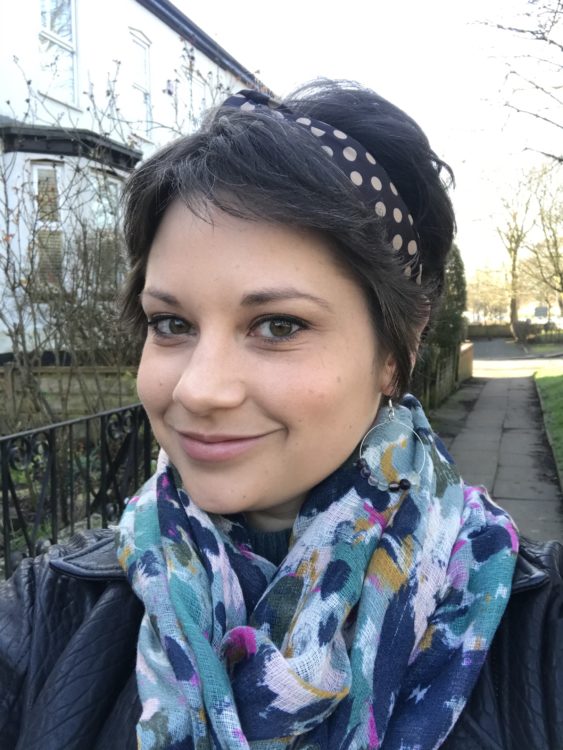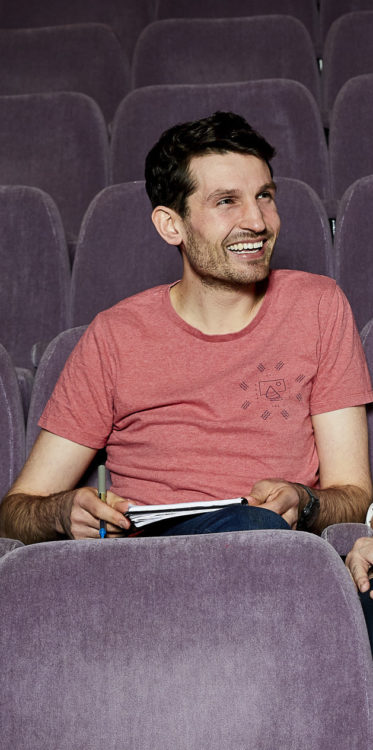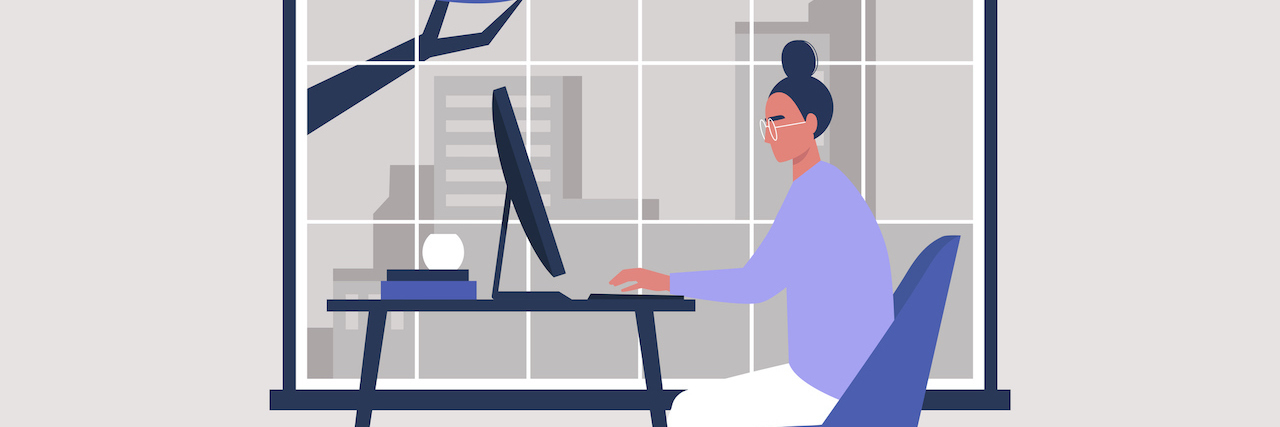Three young cancer survivors reflect on how their professional expertise helped them to navigate through and beyond treatment.
When Claire Shepherd was diagnosed with blood cancer at the age of 28, she had a surprisingly good understanding of what this meant at the molecular level. Ever since a work placement she had undertaken during her degree in medical biochemistry, she’d been fascinated by surface plasmon resonance (SPR); a technique used in oncology (amongst other things) to select drugs capable of targeting cancer cells while minimizing damage to healthy ones. Claire had gone on to do a PhD in drug development, before becoming an application specialist, training scientists in how to use SPR machines. Short of being a qualified medical doctor, she could barely have been better placed to understand the finer details of her own condition, acute myeloid leukemia (AML), and the principles of how it would be treated.
Immediately after diagnosis Claire was glad to have this prior knowledge. “It was helpful to know what AML was, and what was going on in my bone marrow,” she says, “because at the time, I was incredibly ill, and I was struggling to process information.”

Throughout her treatment, Claire had conversations with her doctors that sometimes left her family behind as they lacked the expertise she shared with her medical team. On the hematology ward, she chatted with nurses about new treatments they were being trained in, and felt excited to be invited onto a research trial for a drug that related directly to her own work. Biochemistry and medical research were everyday conversations for Claire, and made her feel “less a patient, more an equal.” Following a bone marrow biopsy, she was able to look at the slides with her own blood samples on them, and understood from her work how they would be analyzed in the lab. “I leaned on my professional skills,” she says “in the way I was communicating with my medical team.”
Communication was important, too, for Amy Morris, an ER nurse, who underwent treatment for breast cancer in her mid-30s. The experience brought home to her the importance of being able to advocate for yourself as a patient. “Knowing allows you control,” she tells me, “when you understand the system and you’re not getting the treatment you know you could have, you can say ‘no, this isn’t OK.'”
Amy’s nursing background gave her the confidence to challenge the suggestion that two drugs would give equal pain relief, when she knew that the one she’d been offered was simpler to administer, without a counter signature. On another occasion, she successfully pushed to be discharged from hospital, and felt her doctors trusted her to keep herself safe because of her being a nurse. And when she turned up at her own department in an emergency, she felt “enveloped” and safe in the hands of colleagues she had to entrust with her own care.
For others, a cancer diagnosis at a young age can be so far removed from everyday life that it’s much harder, initially, the find solace in their professional interests. Toby Peach was in the middle of a degree in community theatre when he was diagnosed with Hodgkin’s lymphoma at age 19. Asked about whether he found creativity to be therapeutic, he says “I closed off. I wasn’t interested. I went three or four years not talking about my cancer experience.” It was only later that Toby started to connect the dots, making a solo theatre show “The Eulogy of Toby Peach” about his illness, which has since toured internationally. Toby has gone on to set up Beyond Arts, a community interest company which works with young people, using the arts to break down taboos around cancer. “Arts gave me the tools to explore my experience and find the language to share it with others,” he says of the starting point for this work.

Claire, Amy and Toby all agree that finding (or creating) strong links between their work and their personal cancer diagnosis is a two-sided coin, with risks as well as rewards. Toby says that his solo show didn’t always feel safe. “When you make something and share it, people share things back. I was suddenly propelled into a world where people were telling me things I wasn’t mentally ready for and that led to some health anxiety. Now when we do projects, we always have a healthcare coach or a wellbeing practitioner available so that if anything comes up for the young people who are sharing their stories, they have someone to talk to.”
Amy describes a dilemma she faced during treatment, saying “I would try not to open a conversation with ‘Hi, I’m a nurse,’ because that can put people on edge; it’s not fair on them. But it’s natural to talk about your life when you’re in hospital for hours having chemo.” Sometimes the people caring for her would make assumptions about her own understanding of the treatment process for her estrogen positive grade 3 invasive ductal carcinoma: “I got comments like ‘well you’re a nurse so you’ll know this’, when actually I’m not trained in specific cancers. I only knew the basics from my training and about complications like neutropenia and sepsis which we see within the Emergency Department.”
Claire explains that while it was helpful to understand her disease at the molecular level, working as a biochemist can make it hard to escape, despite having finished treatment some time ago. “There are some days when I just don’t want to think about cancer,” she says, “but often a presentation I need to watch will open with survival statistics, which can bring up unwanted emotions.”
She also found that studying scientific literature around her own disease too keenly after treatment fueled fears of a relapse. “I was quite worried that if there was any residual leukemia, it would start to come back. [Reading research papers] was good in some ways, but really I was looking for one that showed me that, with the really specific genetics of my leukemia, there would be a low chance of it coming back. Those weren’t the statistics that I read. There is so much conflicting information out there and it’s easy to cherry pick information that paints the worst (or best) picture depending on your mood and level of anxiety.”
In the end, she says, what helped most was when her consultant gave her some papers that she felt were the most valid and relevant to Claire’s concerns. But the whole landscape of leukemia research is changing rapidly. “As a scientist I know that papers are often a few years old because the peer review process takes time. Outcomes are improving all the time but when you read the out of date statistics, you can quickly send yourself down in a spiral. Statistics also reflect collective outcomes for a group of patients, rather than individual patient’s risk of relapse.”
The intersection of Claire’s biochemistry career and her illness is a unique coincidence. For Toby, on the other hand, having cancer so young has steered the direction of his creative work. He runs workshops for the Teenage Cancer Trust, hosts a podcast about life after cancer and is nearing the end of a three year funded project working with an 11-year-old to make a show in her own words about her brain tumor. If he hadn’t had cancer, he thinks he would still be making interactive and playful work, but not with the same people. “I did a community theatre course and I didn’t really know who my community was, but this community is one I want to support.”
While Toby is aware that the people he works with have a huge range of differing cancer experiences, it’s clear from our conversation that his lived experience is an important part of what he brings to his projects. “There’s something about going through trauma at a young age that gives something a little bit different in terms of how I can engage with different groups. A passion.”
Amy, too, feels a sense of authenticity in some areas of her nursing having “been there” as a patient. Although she does not routinely disclose her cancer to patients, she says that when talking about pain relief, for example, “I have more truth in what I’m saying. It’s tough to be the reality of the pain. I understand that better now.” But she doesn’t feel that being cared for has transformed her approach to caring for others in a cliched or romanticized way. If anything, she tells me, “cancer takes the shine off life; it makes you more realistic and aware of the fragility of life once something has challenged your own.”
Amy evidently has a new-found awareness of how tough the world can be, which will surely improve her ability to help others navigate it through her nursing role. She feels that good nursing is holistic, saying, “I try to take time to look at my patients; it’s not just medical.” And she’s determined to have a positive impact by instilling in colleagues and students with whom she works a sense of the responsibility that healthcare professionals have. “Nurses don’t always realize the power they have to make people feel safe,” she says. “Studies have shown that patients can see healthcare workers in a position of authority, not partners in their care, and we nurses need to push to change this. Having cancer has made me more interested in promoting the patient experience.”
Claire, too, says that going through treatment has made her more appreciative of how her work ultimately benefits patients, and sparked interests in aspects of biochemistry that weren’t there before: “I missed out on a therapeutic drug because it wasn’t available at the right time for me, which has made me a lot more interested in the drug manufacturing side of things.” Toby, meanwhile, is currently working out how to deliver safe creative interactions remotely, for young cancer patients who find themselves more isolated than ever during the coronavirus pandemic. His aim for the future, alongside colleagues at Beyond Arts, is to prove the efficacy of using the arts to support young people who’ve experienced the trauma of cancer, and to disseminate and share the model so it can be offered around the UK. He also wants to make more work that speaks to the public. “We’re not very good at talking about cancer. I want to make that world accessible, and make the conversation around cancer easier.”
What advice would they give to young people from similar professional backgrounds who find themselves facing a cancer diagnosis? Claire, wisely, is keen to stress that everyone’s experience is personal to them, but advises other scientists to “resist the urge to spend too much time on PubMed,” (a popular online medical library resource); “maybe ask your consultant to share a couple of the papers they feel are most relevant or cutting-edge right now. And don’t be so distracted by the science that you forget to ask the basic questions.” Amy says that nurses should trust their intuition in order to balance the dual role of being both patient and qualified healthcare professional; ” Sometimes you do have to sit back, but you can be your own advocate too, and ask questions.”
Toby reminds those who are artists by profession that creativity can serve a purpose even if it’s never shared with an audience. “Give yourself permission to explore, without the pressure of it needing to be for someone else,” he says; “Write for yourself, draw for yourself, that’s enough.” He talks about the young cancer community as one where “we’re all working out what it means to be a part of this community. It’s important to keep trying to find our own language.” That language, is seems, must be richly textured to reflect the diversity of young people affected by cancer, and the many different starting points — professional and otherwise — from which they experience it.
Getty image by nadia_bormotova

